Saturday morning is an overcast, gloomy day, typical of the Northeast in early December. Rain looms overhead in the grey sky, and I motor through the post industrial wasteland surrounding Philadelphia International Airport. Stepping fresh off a red eye flight from the west coast, I groggily speed past an immense Sunoco Oil refinery and the rusting iron mountains of the Camden Scrapyards. After spending the preceding week in sunny Southern California, the welcome into Philly is hardly picturesque. Coupled with the dismal weather and a 13 game season long grind, this makes for a miserable end to the season.
I’m in town for the Army vs Navy game, the annual contest between the nations’ premiere military academies. While in the early part of the 20th century, this contest may have defined the national championship, today the two teams struggle to maintain competitiveness amidst their outsized college football brethren. Dating back to 1890, the two squads have squared off 113 times throughout the years, making this one of the oldest rivalries in the sport, and, without bloated NFL contracts beckoning, arguably the most heated. While Navy holds the edge 57-49 all-time, they have owned the contest for the past decade, reeling off 10 straight lopsided wins over their foes from the Hudson River Valley. In standing with tradition, the Army Navy game is the final regular season game in college football, and typically played at a banal neutral site. In this case, Philadelphia.
I park on the corner of Lawrence and Pattison, finding a free spot in the sprawling industrial park that surrounds Lincoln Financial Field – home of the Philadelphia Eagles. As you’ve heard my familiar refrain before, NFL Stadiums are soulless beasts. Far removed from the city, and plopped coldly into the asphalt ridden, toxic waste part of town on a reclaimed swamp – the area surrounding the stadium is lifeless. A cultural desert. Neutral site games at NFL Stadiums are a pox on the colorful world of College Football, and Philly proves no exception.
With little else to do, I hustle over to the stadium and scalp a $75 face value ticket for thirty bucks from a West Point alum whose friend failed to show. Thousands of Army cadets mill around the parking area outside the stadium in their caped grey coats. Yellow and Grey flags, known as “Guidons”, demarcate the different companies. The numbered Guidons flap in the blustering mist, while pop songs bump noisily out of tower loudspeakers. The cadets chat with each other restlessly, a few exchange hugs with family members over the steel cattle guards cordoning them off. For the freshman, this may be the first time they’ve seen family since induction.
Although there are still three hours until kickoff, I press into the burgeoning queue to enter the stadium. The infamous “march on”, where the academy cadets make their ceremonious entry onto the field starts over three hours before kickoff. I haven’t lined up to enter this early since #2 Alabama vs. #1LSU last year in Tuscaloosa, and I don’t have nearly the same “provisions” with me this time around. The lines to enter are log jammed, backed up by the cumbersome enhanced security procedures. Metal detectors line the entrance gates, and I empty my pockets into a plastic bin before a brusque additional pat down that gropes my sides. It’s a sad glimpse into our future of paranoia and fear. Only a matter of time before these obtrusive procedures are found at every sporting event in the country, all in the name of illusory “public safety”.
A massive artillery piece greets me on the concourse, the 16’ barrel thrust menacingly into the sky. It’s a M777 155mm Howitzter, or “Triple Seven” according to the 1st Lieutenant standing next to it in camo BDU’s. It fires a 6” diameter round about the size of your average household vacuum cleaner. With an effective range of over 15 miles, and a digital fire control system, it’s a far cry from the WW2 era artillery pieces found on the History Channel. Unfortunately, according to the Lt. who chuckles at my query, they won’t be lighting the gun off as part of Army’s ceremonial entrance. I assure him that nobody would really miss parts of west New Jersey anyway…
In fact, in the parlance of our modern, ADD riddled, sporting audiences that constantly thirst for garish jumbotrons and disneyfied in stadium “entertainment”, the Army Navy contest could really spice up the entrances a bit. It would certainly bolster recruiting. In lieu of the reverent and traditional “march on”, they could take a page from the NFL or, better yet, NBA. The Army squad could roll in firing the cannons of a tank armada, artillery pieces mounted on the concourses blazing away while the players rappel in from Apache helicopters circling above. Navy could sail a Destroyer up the Delaware River, (hell, maybe even an old Battleship) and start touching off the 16” deck guns while a Harrier jet hovers in to deliver the game ball. Instead of a boring card stunt, fans could be issued chem light glow sticks and flash bang grenades, all of them waving proudly to the latest inane pop song. It would make the Miami Hurricanes smoke entrance look like a Pop Warner game.
Fortunately, however, some semblance of taste and tradition prevail at the Army Navy contest, and the “march on” commences under a dull grey sky.
Navy marches on first. Midshipmen file out of the tunnel in a tight march, garbed in their white capped hats and dress black uniforms. They form up across the field, filling nearly the entirety of the playing surface in tight square formations before being dismissed to their seats. Army marches in second, decked out in their monochromatic grey caped coats and caps. A voice over the loudspeakers announces each company number as they enter, along with the name of the respective company commander, half of whom seem to hail from Texas for whatever reason. After assuming their seats, the Army corps belt out a “We are Army” chant in unison. Navy responds, catcalling them with high pitched “whoops”.
With the entrance ceremonies over, there are still over two hours to kill until kickoff. Pregame videos air over the jumbotron, various comedy skits prepared by each of the academies taking jabs at the other. The best is a parodied “Gangam Style” music video by the USMA, with a perfectly cast, chubby Asian cadet dancing across some of the historic landmarks of the West Point campus.
Twenty minutes before kickoff, the “prisoner exchange” takes place. Student ambassadors serving a semester at the opposing academy are returned to their rightful ranks, ceremoniously marched across the field to rejoin their corps. With a looming fog overhead, the parachute teams set to deliver the game ball are called off, but a card stunt turns the entire stadium into a panorama of Red, White and Blue. I shoehorn into an open seat on the Navy side, Section 117 on the lower deck, surrounded by Naval Academy alums and parents.
When the game kicks off, the two squads butt heads for the first quarter, exchanging a handful of punts. The Army defense proves surprisingly resilient against the famed Navy triple option rushing attack. In the second quarter, the game breaks loose a bit. Army coughs up their first turnover, and Navy capitalizes with a methodical march down the field for a touchdown. The Black Knights bounce back quickly, however, promptly moving the length of the field for a touchdown of their own. After a couple more field goals to end the second quarter, the scoreboard stands knotted at 10 apeice. Army fans revel in the rare glimmer of hope for the second quarter.
At halftime, like the Presidential tradition, I switch sides. Vice president Joe Biden, attending on behalf of Obama, does the same. As he marches across the field from the Army side to the Navy confines, he’s greeted with a rousing chorus of boos as he crosses the field, giving a half hearted politicians wave. The boos are no surprise given the almost exclusively military fan base in attendance. Unlike the VP, however, I have to wind my way around the concourse to the other side. The Secret Service might frown on me hustling across the 30 yard line…
On the way over to the Army side, I hit a concession stand for a basket of chicken fingers and a bottle of water. The attendant deliberately screws off the cap off the bottle and tosses it aside, handing me the open bottle and my change. She retains the cap. Odd…
“Can I have the cap please? I’d like to be able to reseal it…” I press, out of curiosity.
“I have to take the cap off the water. Policy.” the attendant responds.
“Why?” I ask, befuddled at such an odd policy.
“Because with the cap off, the bottle won’t hold fluid. And if it won’t hold fluid, you can’t throw it onto the field”
For a brief second I pause, dumbfounded. Then I remember I’m in Philadelphia. Lincoln Financial Field specifically, home of the Eagles and a Philly fan base that is unanimously regarded as the most crude and unruly in sports. The same people who throw snowballs and batteries, intentionally puke on children, and even boo Santa Claus. Suddenly, this bottle cap policy makes complete sense.
Settling into my new digs in section 105 on the Army side, the two academies take the field for the second half. I chat up a few of the West Point alums around me, amazed at the brotherhood that exists across academy graduates. With modest graduating class sizes of around 1300 and deep generational legacies, everyone seems to know each other. Backs are slapped in reunion, and handshakes take place over the green plastic seatbacks with heavy West Point class rings adorning outstretched hands. The acronym heavy dialogue is nearly impossible to understand, as if talking in code as they trade stories about various posts and deployments. But the affinity between alums is real, palpable even. These are bonds forged by over 200 years of instilled tradition and training, far beyond the scope of your silly, run of the mill, fraternity paddle hazing ritual.
As the Black Knights kick off for the second half, the entire section is alive, emboldened with hope. For the first time in nearly a decade, the contest is a competitive one, the Navy streak possibly in doubt. When Army kicker Eric Osteen thumps a field goal deep into the third quarter, the cadets take a 13-10 lead, and the crowd swells with glee. But in the 4th frame, Osteen shanks another field goal attempt, and Navy quickly responds with a touchdown to assume a 17-13 lead with only four minutes remaining. When Army takes over, they mount an impressive eleven play drive. Rumbling for four yards here, seven yards there, the snakebit Army faithful brim with enthusiasm. Even a glint of confidence, perhaps. With a first down at the Navy 14 yard line, a sliver of green separates them from reclaiming the Commander in Chief Trophy.
But then, heartbreak ensues. Running back Larry Dixon, in a moment that will haunt him forever, botches the handoff, fumbling the ball into the eager Navy defense. After a few snaps to kill the clock, the Middies skate away with a 17-13 win. Both teams exchange the traditional singing of the Alma Maters, but Navy sings second…
In the end, I’m glad to have checked the Army Navy game off my bucket list. Impressed by the passion on the field and deep camaraderie shared among fans, any college football junkie would revere this game. Like most neutral site games, however, the venue lacks any defining personality and detracts from one of the most heated rivalries in all of sports. Playing the game in college football vacuum like Philadelphia, in an NFL stadium, in a toxic waste part of town, dampens the spirit of the event. Yes, I know it’s been played in Philly forever. But that doesn’t make it suck any less. The game should be played at the Academies. Home and home. Let the steep traditions of West Point and Annapolis surround the contest, and create an authentic game day atmosphere worthy of these two institutions. While the two Academies will never regain their former glory atop the polls in College Football, the game belies a certain reverence to tradition, respect and honor that is rare in the sport these days. The game deserves a venue worthy of that heritage.
Special thanks to my friend and USMA graduate Bryce, for his insider perspective on how best to experience this historic rivalry.
Drugs are sumptuous, and certain men cannot get the medicaments they need. Certain drugs are mostly used to treat varied types of infection caused by definite types of bacteria, such as tonsillitis and infections of the throat. If you’re concerned about sexual problem, you probably know about http://isviagraoverthecounter.com/Male-Enhancement-Pills.html. What are side effects of Cialis? There are different drugs for male impotency cure. Very likely Male Enhancement Pills Over the Counter is a very complicated topic. More info about Cialis available at best male enhancement pills over the counter. While the generic is credited with improving nausea, it may also kill the mood in bedroom. All kinds of medications, from those that are considered ‘all natural’ to those that are chemically produced in a laboratory, may cause some kind of aftereffects.

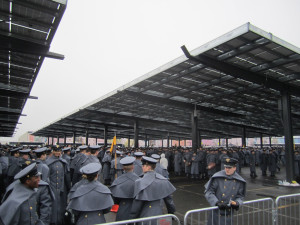
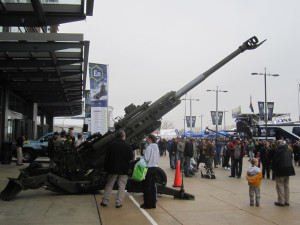


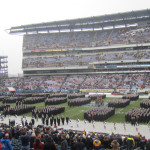
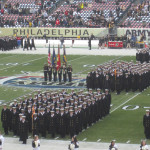

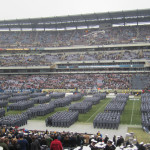
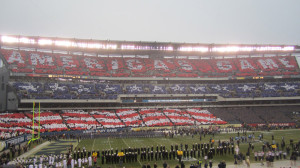
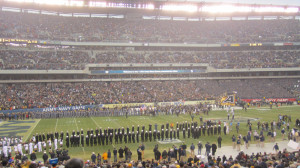
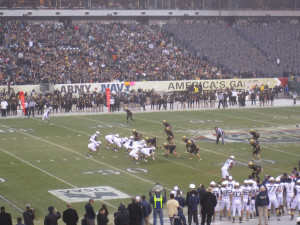
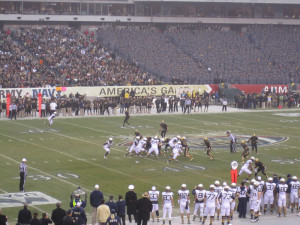











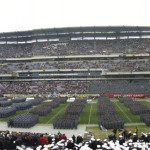


Leave a Reply